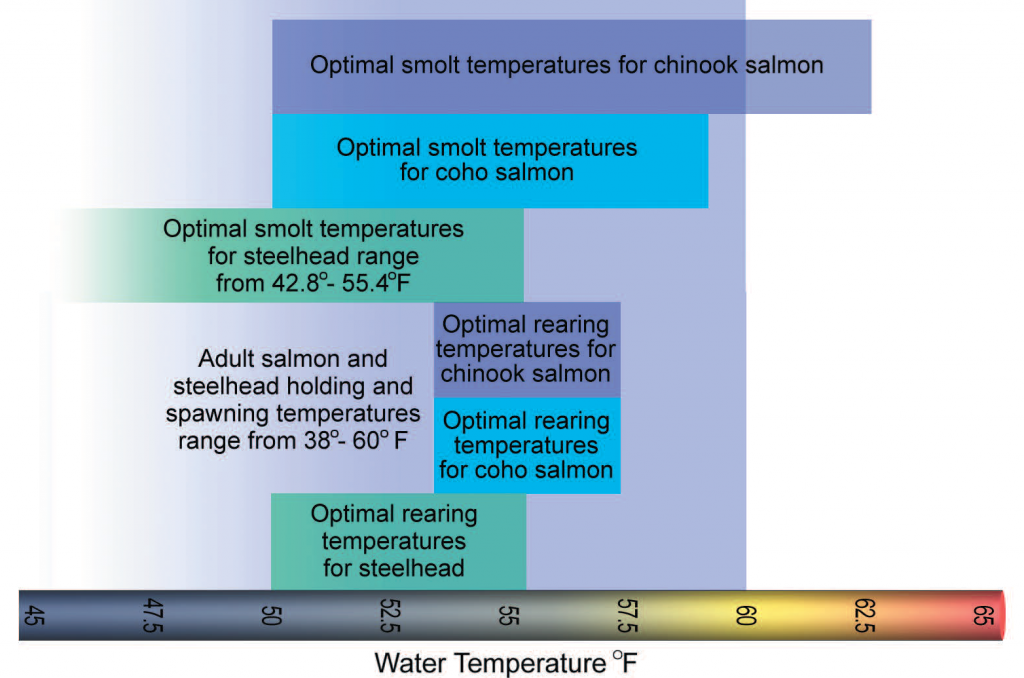
Water temperatures are critical for salmonids. In particular, both young and adults require cool water throughout the summer. Prior to the dams, juvenile salmonids and spring-run adults are thought to have spent much of this time in higher reaches of the tributaries, much of which were blocked by the dams. The lower reaches that once became shallow and warm in the summer, are now expected to sustain juvenile salmonids and spring-run adults throughout the summer. To accommodate this need, dam releases are sustained through the summer to provide adequate flow of cool water. Simultaneously, water diverted from the Trinity River to the Central Valley is also used to help manage temperature in the Sacramento River.
THE FLOW WORK GROUP
The Flow Work Group addresses the challenges of managing water releases for temperature control compliance, and interfaces with the Central Valley Operations on water diversions to the Sacramento River.
TEMPERATURE MONITORING
Water temperatures in the Trinity and Lower Klamath River are monitored to understand how well the dam releases met expected water temperature criteria.
Major findings from 2009 include:
- Spring water temperatures in the Trinity River generally fell within the “Optimal” or “Marginal” thermal regime for smolts, except for two brief periods, May 18 and May 30, where water temperatures entered the “Unsuitable” criterion for smolts.
- The North Coast Region Basin Plan temperature objective of 15.6 °C at Douglas City to protect adult salmon was exceeded 33 days between July 1 and September 15 (Figure). The maximum temperature experienced during this time period was 16.5 °C, or a 0.9 °C exceedence.
- The temperature objective of 13.3 °C at the North Fork Trinity River was not exceeded. The reason for meeting this objective was in part due to using the deeper auxiliary outlet at Trinity Dam to release cooler water.
- Despite not meeting the objective all the time, the prescribed flow did result in increased temperature differences between the Trinity River and the Klamath River that indicated that these flows moderated water temperatures during a time when water temperatures of the Klamath River were increasing.
The most pronounced influence of Lewiston Dam releases on downstream temperatures occurred from August 25 to August 31 when a pulse flow, peaking at 2,767 cfs, was released to support the ceremonial needs of the Hoopa Valley Tribe. During this time, the water was on average 2.9 °C colder than the Klamath River at the confluence of the Trinity River. A peak difference of 4.4 °C was recorded on August 26, a time when flow from Lewiston Dam represented a dominant flow source to the Klamath River. The large differential resulted in a temperature reduction of 2.0 °C below the confluence and between 1.0 and 1.5 °C difference at the Terwer Gage of the Lower Klamath River.
SCIENCE PAGES
